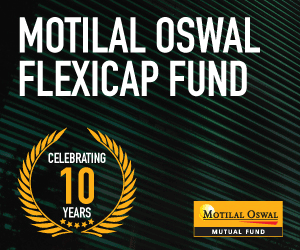Over the medium to long term we expect banking index to continue to outperform the broader markets
BFSI Industry Interview

Harshad Borawake is the Head – Equity Research and Fund Manager of Mirae Asset Investment Managers for the last 3 years. Currently he is managing Mirae Asset Banking & Financial Services Fund as Co-Manager, Mirae Asset Large Cap Fund as Co-Manager, Mirae Asset Hybrid Equity Fund as Co-Manager of Equity Portion and Mirae Asset Equity Savings Fund as Co-Manager of Equity Portion. Prior to joining Mirae Asset Investment Managers he worked with Motilal Oswal Securities.
Gaurav Kochar is the Fund Manager of Mirae Asset Investment Managers and has 4 years of experience in the industry. He will be managing Mirae Asset Banking & Financial Services Fund as Co-Manager. Prior to joining Mirae Asset Investment Managers he worked with Ambit Capital for 3 years.
What is your outlook on the Banking and Financial Services sectors in the post COVID recovery scenarios?
As you know, while the large part of economy has opened up and recovering, full recovery is expected as and when the vaccine availability becomes certain. In the interim, most of the high frequency macro indicators signal sharp recovery – Toll collections, E-way bill generations, PMI data, GST collections improving MoM, etc all point towards some pickup in the economy.
Coming to BFSI sector, the data and management commentary suggests that the asset quality challenges may not be of the magnitude as feared post 1QFY21.Some pro-active measures by the government including Rs20trn stimulus, 6-month moratorium by RBI, Rs3trn govt-guaranteed credit line for MSMEs and restructuring for corporates has been instrumental in helping borrowers during the pandemic. With collections now reaching 90-95%, very small portion of customers seem to require restructuring.
Thus, we would sum up by saying that while the indicators are positive and the outlook of the sector is much better, we need to continuously monitor these indicators post festive season and check for the sustainability of these trends during the next few months.
The Bank Nifty has underperformed both Nifty and the broader market (Nifty 500) on a year to date basis. Are you seeing attractive investment opportunities in banking and financial services at current valuations?
THE BFSI sector being the backbone of the economy clearly will have a larger bearing of the economic growth. Hence, we are not surprised by the recent underperformance. However, if you were to look over the longer term, the Banking Index tends to comfortably outperform the broader markets (NIFTY).
Over the medium to long term, we expect banking index to continue to outperform the broader markets led by better penetration with growing trend for financialization of savings and it would be key enabler as well as beneficiary in India’s journey towards the USD 5 trillion GDP.
At the current levels, the sector is trading at 1 standard deviation (SD) below the longterm average valuations. In the context of expected growth and profitability, we find a quite a few names in this sector at attractive valuations.
Average retail investors associate financial services mostly with banks and lending NBFCs. The ambit of financial services is much broader. For the benefit of retail investors please explain which institutions come under financial services and their risk characteristics?
This is a very relevant question. And we would like to begin by saying that there is a lot more to the BFSI sector than just banks. There are NBFCs (including HFCs, microfinance companies), insurance companies (life as well as non-life), capital market players like AMCs, brokerages, credit rating agencies etc. Over the last few years, the weight of the non-banks within the financial services sector has been going up with the listing of many insurance companies and capital market players. For e.g. in Nifty Top 250 companies, the share of Financials is ~28%. Within this, the share of banks (public & private) is ~55% while 45% of the weight comprises of Non-bank players like NBFCs, insurance and capital market players.
You are launching Banking and Financial Services Fund NFO. Please describe the investment strategy of this fund?
The fund endeavours to participate in India’s journey towards the USD5 trillion GDP economy. The fund will invest a minimum of 80% in BFSI names. The fund will be market cap agnostic, therefore there has freedom and opportunity to pick a company in early stage of its evolution.
A brief about our investment process – Similar to other funds at Mirae AMC, we would build the portfolio on bottom up approach, while keeping cognizance of the benchmark. In terms of process - We will filter out and invest in names, predominantly from the BFSI universe through a process driven research with few qualitative parameters like franchise strength, management quality, product differentiation; quantitative filters like asset quality, return ratios, long term growth and market opportunity etc. After this, we evaluate based on detailed valuations after considering all other risk and liquidity parameters.
To summarize, we would endeavour to invest in high quality names, led by efficient management available at reasonable valuations with long term sustainable growth and profitability.
Many investors may still be concerned about the bad loans problem in banks (both public and private sector) and NBFCs. For the benefit of investors please describe the stock selection criteria of this fund, particularly for lending institutions?
Post the asset quality review by RBI from FY16, large corporate accounts especially in power, infra and steel sector became NPA. However, as things stand today, majority of these accounts are already written off and/or has a comfortable 80-90% provisioning. Also, incremental lending in last few years is largely towards better rated corporates and emergence of CIBIL keeps prudence retail book asset quality.
Further, the balance sheet of lending institutions are much stronger with better capital (Tier-1 ratio >14% for large banks). Thus, as an investor, we get a reasonable comfort that there shouldn’t be incremental pain from the legacy book and incremental pain on asset quality should be manageable and not result in any asset quality shock.
As described earlier, as a part of our stock selection process, portfolio qualityis one of the key parameters while selecting a stock. We do a though quantitative check – NPA, provisioning etc and also some qualitative checks through branch visits, speaking to field agents, inputs from industry expert etc to ascertain quality of the portfolio.
Who should invest in this fund? What should be their risk appetite? How long should they be prepared to remain invested (minimum recommended investment tenure)?
While this is a thematic fund, the BFSI theme accounts for large part of the listed universe and is reasonable well diversified. It has lot of small segments within itself – NBFCs, insurance, capital market players contributing ~28% of its weight in Nifty Top 250 companies. BFSI sector will play an important role as India continues its growth over the next decade. Thus, we believe investing in a BFSI fund is akin to investing directly in the India growth story.
As the banking and financial sector fund takes concentrated call, investors should invest in thissector to supplement their core portfolio of diversifiedschemes. These funds are more suitable for mature investors with anaggressive risk profile, and the allocation for thematic funds should be 10-15% based of investors risk profile. We believe the time horizon for the fund is should be atleast 5 years and above.
Investors should review theirportfolio periodically and take investment decisionsbased on their overall financial plan after seeking advice from their financial advisor.
Mutual fund investments are subject to market risks, read all scheme-related documents carefully.
Recent Interviews
-
In conversation with Mr Mohit Bhatia Chief Executive Officer with Bank of India Mutual Fund
May 10, 2024
-
In conversation with Mr Manish Mehta National Head Sales Marketing and Digital Business of Kotak Mutual Fund
May 3, 2024
-
In conversation with Mr Deepak Ramaraju Senior Fund Manager Equity with Shriram Mutual Fund
May 2, 2024
-
In conversation with Mr Manish Gunwani Head Equities with Bandhan Mutual Fund
Apr 17, 2024
-
In conversation with Mr Aniruddha Naha CIO Alternatives of PGIM India Asset Management Pvt Ltd
Apr 15, 2024
Fund News
-
WhiteOak Capital Mutual Fund launches WhiteOak Capital Special Opportunities Fund
May 15, 2024 by Advisorkhoj Team
-
DSP Mutual Fund launches DSP Nifty Bank Index Fund
May 15, 2024 by Advisorkhoj Team
-
Bajaj Finserv Mutual Fund launches Bajaj Finserv Nifty 1D Rate Liquid ETF
May 13, 2024 by Advisorkhoj Team
-
Bajaj Finserv Mutual Fund launches Bajaj Finserv Multi Asset Allocation Fund
May 13, 2024 by Advisorkhoj Team
-
Mirae Asset Mutual Fund launches Mirae Asset Nifty MidSmallcap400 Momentum Quality 100 ETF Fund of Fund
May 10, 2024 by Advisorkhoj Team




